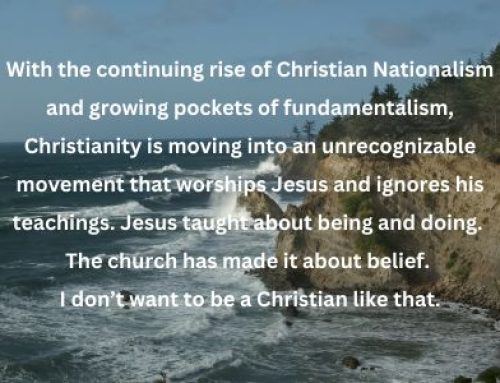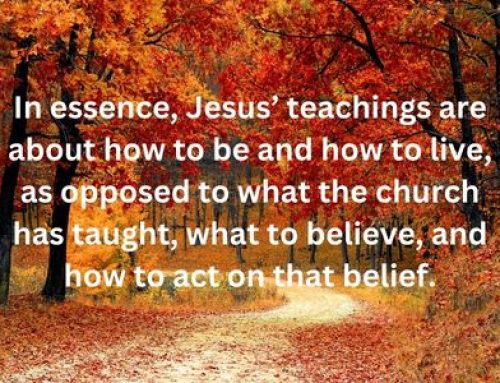My December blog comes out of my book, “Confessions of a Christian Cynic,” Essay 15, on what do we do with the Christmas Story? This essay has been edited and updated.
ESSAY #15: WHAT DO WE DO WITH THE CHRISTMAS STORY?
“Christianity may be surprised to learn that there are different versions of the cherished Nativity story that we tell and retell. This is due to the varying interpretations that are present in the New Testament. There are two accounts of the first Christmas that offer differing details and context for which it occurred. Many people are unaware that Luke and Matthew offer completely separate genealogies regarding Jesus.” Marcus Borg
There were no witnesses to the birth event of Jesus. All we have are the oral traditions, some myth and folklore, and the accounts of the gospel of Matthew and Luke. By the time Matthew and Luke got around to writing their accounts, (late 70’s, early 80’s, and perhaps, even later, CE) a great deal of oral tradition had been passed around. This would have been 35+ years after the death of Jesus and about 70+ years from his birth, assuming 3CE as that date. A generation of stories had most likely been created and passed around to justify the divine origin of one believed to be the Son of God.
 Interestingly, Matthew and Luke tell different stories about the birth. Both, however, place the birth in Bethlehem. From Matthew’s account, one would suppose that Mary and Joseph lived in Bethlehem prior to the birth, because Matthew says in 1:11, when the Wise Men arrived on scene, they went directly into the house… at 3737 Glory Way, not a stable or a cave. Luke, of course, has them traveling to Bethlehem from Nazareth, due to a Roman census requiring families to register in the place of their descendants. Joseph, being a descendant of David, traveled to the city of David—Bethlehem. Since it is presumed that Jesus grew up in Nazareth, Luke’s account at least makes the connection. Current scholarship, in some cases, argues that Jesus was most likely born in Nazareth. Interestingly, there is no record in Roman history that a census had occurred during the period of Jesus’ birth. The point here is that Matthew and Luke tell two different stories. Their genealogies are different. The two gospel writers wrote their stories out of their communities, nuanced by the facts they had about the story.
Interestingly, Matthew and Luke tell different stories about the birth. Both, however, place the birth in Bethlehem. From Matthew’s account, one would suppose that Mary and Joseph lived in Bethlehem prior to the birth, because Matthew says in 1:11, when the Wise Men arrived on scene, they went directly into the house… at 3737 Glory Way, not a stable or a cave. Luke, of course, has them traveling to Bethlehem from Nazareth, due to a Roman census requiring families to register in the place of their descendants. Joseph, being a descendant of David, traveled to the city of David—Bethlehem. Since it is presumed that Jesus grew up in Nazareth, Luke’s account at least makes the connection. Current scholarship, in some cases, argues that Jesus was most likely born in Nazareth. Interestingly, there is no record in Roman history that a census had occurred during the period of Jesus’ birth. The point here is that Matthew and Luke tell two different stories. Their genealogies are different. The two gospel writers wrote their stories out of their communities, nuanced by the facts they had about the story.
It is not my point to ravel through the Matthew and Lukian accounts to determine which account is most accurate. We will probably never know. My intention is to look at the Christmas story in the light of 21st century scholarship and knowledge and consider what it means for Christians in what Marcus Borg calls the “emerging paradigm” of Christianity for the 21st century. (The Heart of Christianity, Marcus Borg, Harper-2003)
In a previous essay I have already discussed the virgin birth motif. I don’t wish to belabor this point except to say that I lean away from the “Virgin Birth” notion. The “virgin birth” idea was not new to 1st century religions. It was a common thread that many religious communities believed that their “messiah” was virgin born. What is interesting here re: the virgin birth, ancient Aramaic’s believed that it took three persons to consummate a child, a mother, a father and the Holy Spirit. It would not be unusual in Aramaic culture for a woman to say, “I am with child by the Holy Spirit, and everyone would understand the meaning. When Gabriel told Mary that she would conceive a child by the Holy Spirit, it does not preclude the notion that Mary and Joseph consummated their marriage after they were married. After all, even back then a full pregnancy was nine months. It is interesting how the church chose to tell this part of the story.*
The story is a timeless story both in beauty and poetry. It is true in a sense. Did it happen the way the gospel accounts imply? Were there shepherds and wisemen? The answer is yes and no. The spirit of the story is true, but the actual events are not. Marcus Borg used to say when asked, “Is the Christmas Story true?” He would respond by saying, “Yes, the story is true, but all the facts aren’t!” In essence, it doesn’t matter whether it is literally true or not. Jesus was born. As God does with every birth, God instills with each soul the full capacity of God’s Love.
The uniqueness of Jesus is that he was able to understand that Love and was able to imitate that Love and express that Love in a way that made people do a “double-take” when they heard or met him. He expressed the very Self of God. In a real sense, people had a better understanding of God after experiencing Jesus. As Paul would say, we put on the “mind of Christ” in our daily walk. We experience in Jesus, the Christ, the very consciousness of God’s deep abiding Love that pervades God’s presence, which of course, means to always do the best we can, wherever we can, and to whomever we can.
Christmas, then, becomes the celebration of this Christ consciousness in our life that is not bound by limitations of fact or myth but touches kings and shepherds alike with the same Spirit. And once you have experienced this Christ, angels will indeed sing, “Peace on earth, goodwill towards all people!”
*This Aramaic understanding comes by Dr. Rocco Errico, Aramaic scholar.




